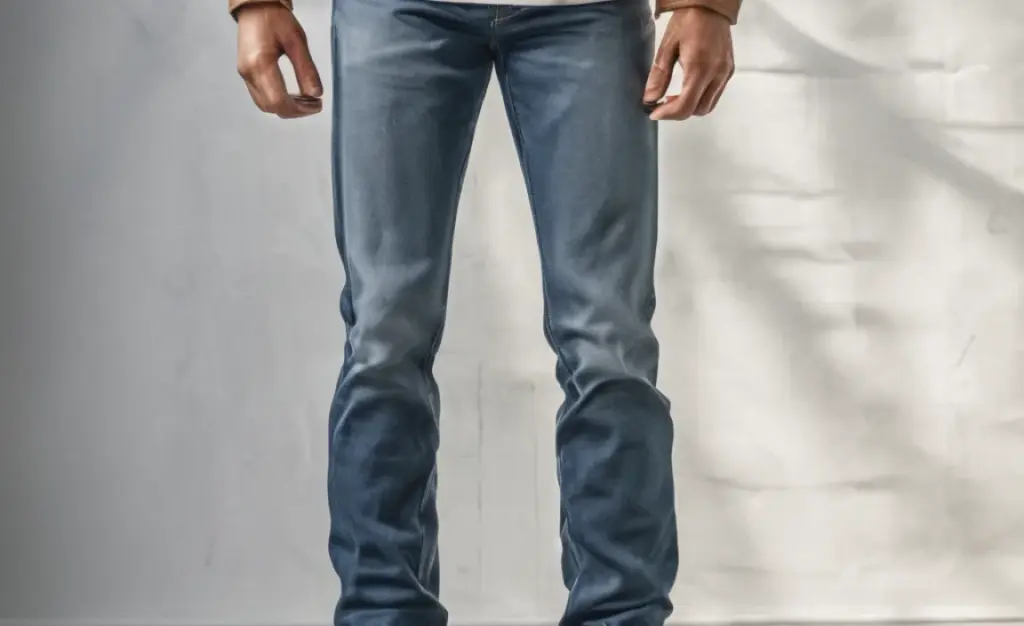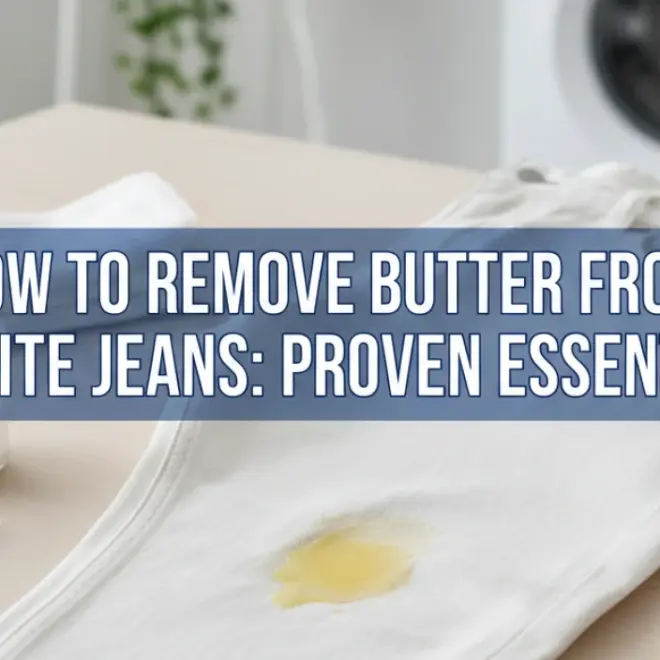Quick Summary: Learn how to hem dad jeans easily using the proven vinegar method. This method shrinks denim for a perfect fit without sewing. Follow these simple steps for a clean, custom hem on your favorite jeans.
How to Hem Dad Jeans: The Proven Vinegar Method Revealed
Ever find those perfectly stylish dad jeans are just a little too long? You love the relaxed fit and the vintage vibe, but tripping over the extra fabric can be a drag. It’s a common problem, but luckily, you don’t need a sewing machine or complex skills to fix it. We’re going to walk through a simple, effective method using something you probably already have in your kitchen: vinegar!
This isn’t about complicated tailoring. This is about a practical, no-fuss way to get your jeans to fit just right, giving them a custom feel without any stitching. Think of it as a handy trick to make your clothes work better for you. Ready to get that perfect length? Let’s dive in.
Why Dad Jeans Need a Good Hem
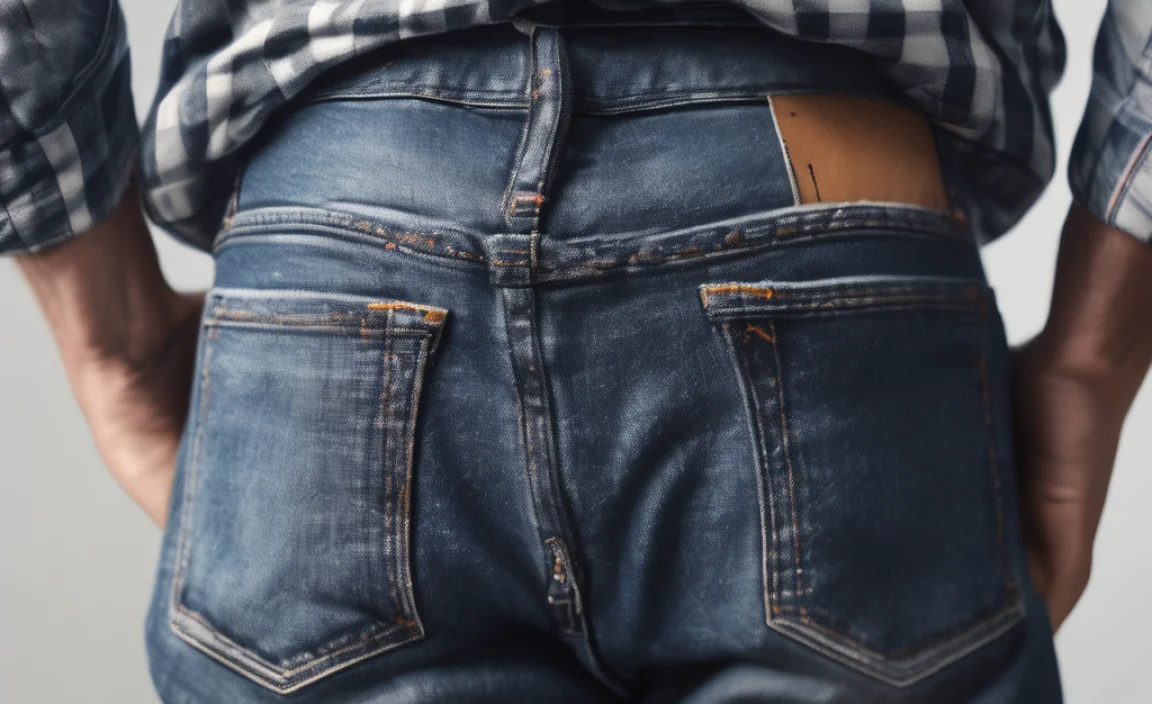
Dad jeans, with their looser fit and often higher rise, are a fashion staple for comfort and style. However, their generous cut can sometimes mean a hem that pools around your shoes, creating a less-than-polished look. A proper hem not only improves the aesthetic but also prevents premature wear and tear on the fabric by keeping it off the floor. For many, the ideal length sits just above the shoe, offering a clean line.
Getting the length wrong can make even the coolest jeans look sloppy. Luckily, achieving the right length doesn’t always require tailoring. We’re focusing on a method that’s accessible for anyone, no matter their experience level.
Understanding the Vinegar Method
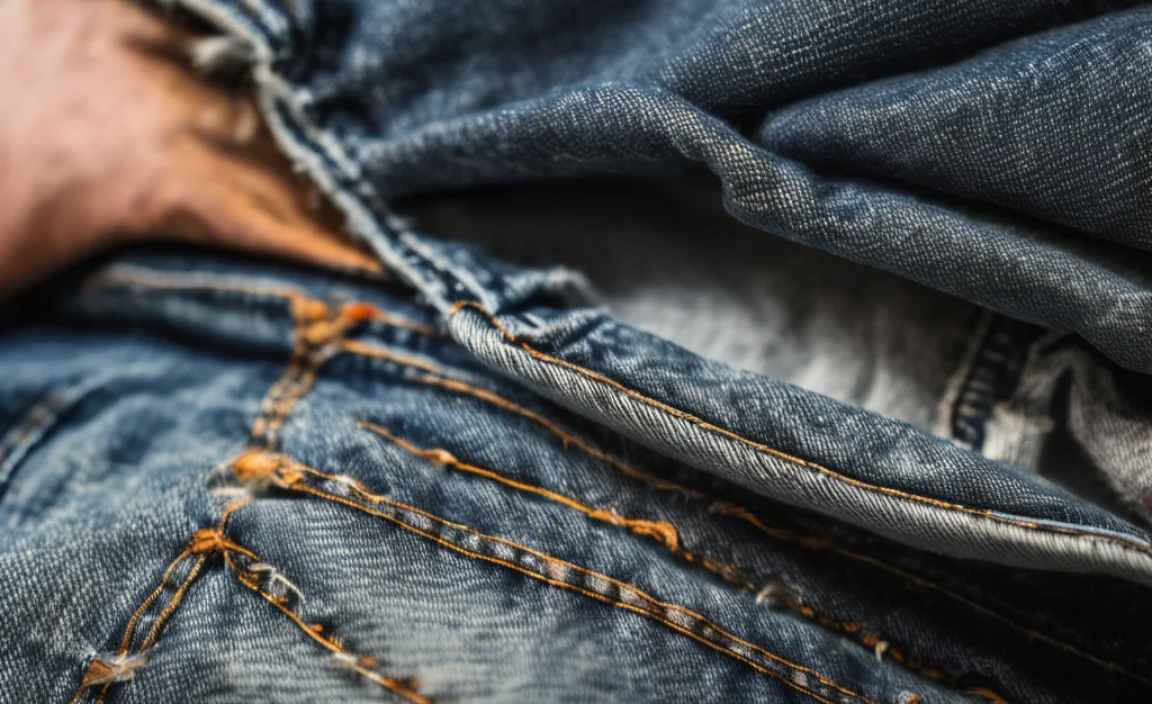
The vinegar method for hemming jeans relies on a simple principle: a controlled, temporary shrinkage of the denim fabric. By soaking the hem area in a vinegar and water solution and then applying heat, you can encourage the fibers to contract. This isn’t permanent alteration like sewing, but a clever way to adjust the length of your jeans to a more desirable fit, especially useful for slightly oversized denim or when you want a more cropped look without cutting. The acidity in vinegar helps to relax the cotton fibers, allowing them to shrink more effectively when dried with heat.
It’s important to approach this with realistic expectations. This method works best for minor adjustments. For significant length changes or if your jeans have a specific, delicate weave, traditional hemming might be a better, more permanent option. However, for a quick fix and a noticeable improvement in fit, the vinegar method is surprisingly effective.
What You’ll Need: Your Hemming Toolkit

Gathering your supplies is the first step towards a perfectly hemmed pair of dad jeans. You don’t need much, and most of these items are likely already in your home. Having everything ready will make the process smooth and efficient.
- Dad Jeans: The star of the show! Make sure they are clean and dry before you begin.
- White Vinegar: This is the key ingredient. Plain white vinegar is best for its acidity and lack of color.
- Water: To dilute the vinegar.
- Bucket or Basin: Large enough to submerge the bottom of your jeans. A clean sink or bathtub can also work.
- Measuring Tape or Ruler: To determine your desired hem length.
- Fabric Marker or Chalk: To mark your desired hemline.
- Scissors: Sharp scissors are best for a clean cut if you decide to trim excess fabric (optional, but recommended for very long jeans).
- A Flat Surface: For drying and ironing.
- Iron and Ironing Board: Essential for activating the shrinkage and setting the hem.
- Towels: To protect your surfaces and absorb excess water.
Step-by-Step: The Proven Vinegar Method

Follow these straightforward steps to achieve a perfectly hemmed pair of dad jeans. Each step is designed to be easy to understand and execute, ensuring you get the best results for your denim.
Step 1: Measure and Mark Your Desired Hemline
Put on your dad jeans and stand in front of a mirror. Decide on the exact length you want them to be. Use your measuring tape to measure from the crotch seam down to where you want the new hem to fall. A common length for dad jeans is just above the shoe or at the ankle bone. Once you’ve decided, mark this length on the inside of each pant leg using your fabric marker or chalk. For an even hem, ensure your marks are at the same height on both legs and wrap around consistently.
Tip: It’s always better to mark slightly longer than you think you need, as you can always trim more off later. Denim can be tricky, and a little extra fabric gives you room for error.
Step 2: Prepare the Vinegar Solution
In your bucket or basin, mix a solution of one part white vinegar to three parts water. For example, if you’re using 3 cups of water, add 1 cup of white vinegar. Stir the mixture well. This ratio is balanced to be effective for shrinking without being overly harsh on the fabric.
Note: Ensure the basin is large enough to comfortably submerge the bottom few inches of each jean leg. Cleanliness is key; make sure the basin is free of any residues that could stain your denim.
Step 3: Soak the Hem Area
Carefully submerge only the bottom sections of your dad jeans—from the marked hemline down to the original hem—into the vinegar and water solution. Make sure the fabric is thoroughly saturated. Let the denim soak for about 10-15 minutes. This allows the vinegar to penetrate the fibers and prepare them for shrinking.
Important: Avoid soaking the entire pair of jeans, as this might lead to uneven shrinkage or affect the fit of the waistband and seat. Focus only on the portion you intend to shorten.
Step 4: Gently Wring and Prepare for Drying
After soaking, carefully lift the jeans out of the solution. Gently wring out the excess liquid from the soaked portion. You don’t want them dripping wet, but they should remain damp. Lay the jeans flat on a clean towel and roll them up to absorb more moisture. This ensures the dampness is concentrated in the area you want to shrink.
Step 5: Iron to Shrink and Set the Hem
This is where the magic happens. Lay your jeans flat on an ironing board, ensuring the marked hemline is straight. Using your iron on a medium-high heat setting (check your jean’s care label first), start ironing the damp, soaked section. Iron with firm pressure, moving the iron back and forth over the fabric. As the water evaporates from the vinegar solution, the denim fibers will shrink, effectively making the jeans shorter. Concentrate your ironing on the marked hemline and the area just above it.
Continue ironing until the section is completely dry. You should notice the fabric has tightened and the length has reduced. Repeat the ironing process, ensuring all parts of the soaked section are thoroughly dried and shrunk. This step helps to set the new length.
Step 6: Check the Length and Repeat if Necessary
Once the jeans are completely dry and cool, try them on to check the new length. Stand naturally and look in the mirror. If the length is now perfect, congratulations! If they are still a bit too long, you can repeat steps 2 through 5 on the same section. You might need to soak and iron again for a more significant adjustment.
Pro Tip: For a cleaner finish and to remove the original hem, you can optionally trim off the excess fabric below your new hemline after the vinegar method has set. Ensure you leave about half an inch for a folding-over hem or trim precisely to the desired length if you prefer a raw edge finish.
Optional: Trimming and Finishing Your Hem
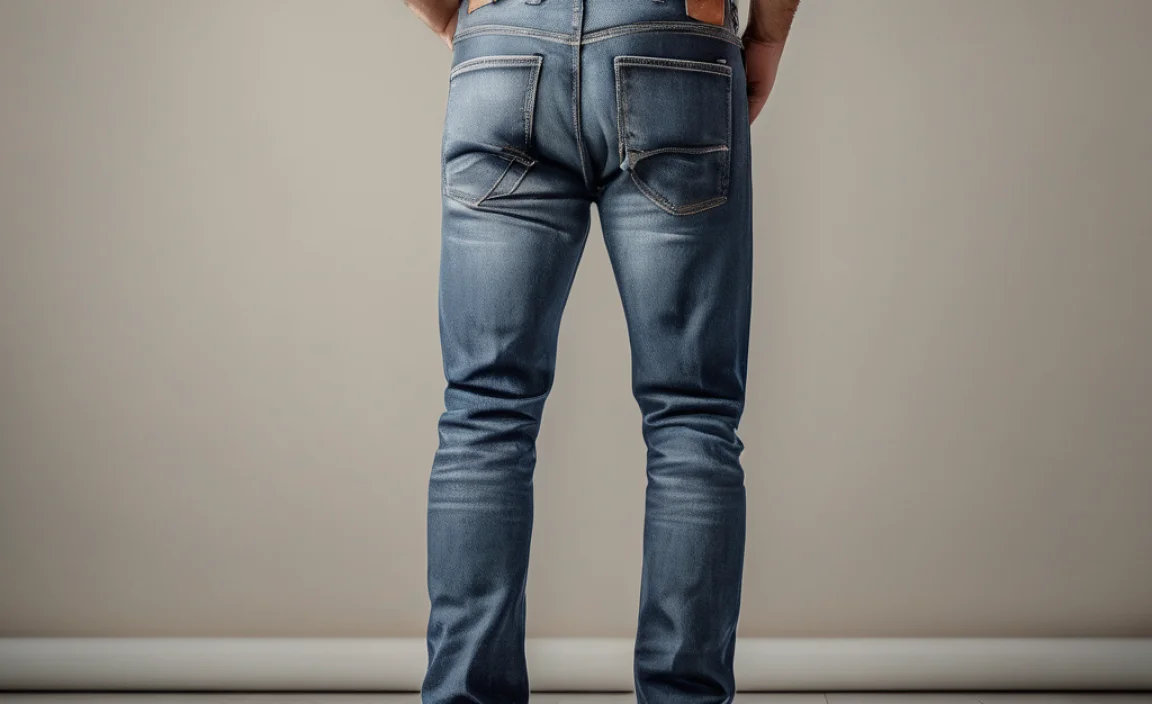
If your dad jeans were significantly longer than desired, you might want to trim off the excess fabric after the vinegar shrinking process. Ensure the jeans are dry and you’re happy with the new length before you cut.
Trimming Excess Fabric
Lay the jeans flat. If you want a folded hem, you may have shrunk them to the exact length and can now fold the fabric up to where the original hem was. If you prefer a raw, frayed edge, you can cut precisely at your marked line. For a cleaner, folded hem, you’ll want to trim the excess fabric about half an inch below your desired finished hemline. This extra material will be folded up.
Creating a Folded Hem
- Lay the jeans flat and smooth out the fabric at the bottom of the leg.
- Fold the bottom edge of the denim upwards by about half an inch, pressing with the iron to create a crisp crease.
- Fold it up again by the remaining amount so that the raw edge is hidden inside the fold and the new hem sits at your marked line.
- Press firmly with the iron to set this new hem. For a more permanent finish, you could consider a few simple stitches by hand or machine along this fold if you have basic sewing skills.
Creating a Raw Hem
- Lay the jeans flat and smooth out the fabric at the bottom of the leg.
- Using sharp fabric scissors, cut precisely at your marked hemline.
- To encourage fraying, you can wash and dry the jeans. You can also gently pull out a few threads along the cut edge with tweezers over time.
Pros and Cons of the Vinegar Hemming Method
Like any clothing alteration technique, the vinegar method has its advantages and disadvantages. Understanding these can help you decide if it’s the right approach for your dad jeans.
| Pros | Cons |
|---|---|
| Easy and Accessible: Uses common household items. Requires no special skills or equipment beyond an iron. | Temporary/Minor Adjustments: Best for slight length changes. May not work for significant alterations. Shrinkage can be unpredictable for some fabrics. |
| No Sewing Required: Ideal for those who can’t or don’t want to sew. | Potential for Unevenness: If not applied carefully, shrinkage can be uneven, leading to a crooked hem. |
| Cost-Effective: Saves money on tailor fees and expensive alteration tools. | Vinegar Smell: A faint vinegar smell may linger initially, though it usually dissipates after washing. |
| Good for Specific Looks: Can achieve a quick crop or adjust length without cutting, especially useful for modern trends. | Not Permanent: The shrinkage effect can sometimes relax over time or with further washing, though it generally holds well. |
| No Fabric Damage (if done correctly): When followed carefully, it doesn’t cut or permanently alter the fabric in a damaging way. | Requires Patience: Needs careful measuring and ironing to achieve the best results. |
When to Consider Traditional Hemming
While the vinegar method is a fantastic DIY solution for many situations, there are times when seeking professional help or using traditional sewing techniques is more appropriate. Understanding these instances ensures you get the best outcome for your garment.
- Significant Length Adjustments: If you need to shorten your jeans by more than a few inches, the vinegar method might not provide enough shrinkage or could lead to uneven results. A tailor can precisely remove excess fabric.
- Delicate or Unusual Denim: Very fine weaves, blends with significant stretch beyond typical denim, or vintage fabrics might react unpredictably to the vinegar and heat method. A professional can assess the fabric and determine the best alteration method.
- Specific Hem Styles: Complex hems, like those with intricate stitching, frayed edges that require careful construction, or specific cuff styles, are best handled by someone experienced in tailoring.
- Ensuring a Perfect, Permanent Fit: For a truly bespoke fit that you want to last indefinitely without any chance of the effect changing, sewing is the most reliable method. A tailor will create a clean, permanent hem that matches the original construction.
- High-Value or Sentimental Jeans: If your dad jeans are particularly expensive or hold sentimental value, you might prefer the assurance of professional alteration to minimize any risk of error.
For these scenarios, consult a local tailor or seamstress. You can find reputable services through local clothing shops or by searching online directories. For instance, organizations like the International Association of Professional Uniform Services (IAPD), while focused on uniformed services, highlights the importance of skilled alterations and professionals often belong to such bodies, indicating a standard of quality.
Maintaining Your Hemmed Jeans
After you’ve successfully hemmed your dad jeans using the vinegar method, proper care will help maintain their new length and overall appearance. Think of it as extending the life of your newly fitted favorite bottoms.
Washing: For the first wash after hemming, it’s a good idea to wash your jeans in cold water. This helps to set the new hem further and minimize any potential for further, unintended shrinkage or loosening. Wash them with similar colors to avoid dye transfer.
Drying: Air drying is generally best for preserving the fit and integrity of denim. If you must use a dryer, opt for a low heat setting. High heat can sometimes cause denim to shrink further or become stiff. Hang your jeans to dry over a drying rack or clothesline, ensuring they hang straight to prevent creasing or misshaping the hem as they dry.
Ironing: If your jeans become wrinkled, iron them on a medium setting. You can re-iron the hem area if needed, but avoid using excessive heat directly on the shrunken fibers. A pressing cloth can offer an extra layer of protection.
Storage: Fold your jeans neatly or hang them to store. Avoid stuffing them into overcrowded drawers, as this can lead to permanent creases and affect the fabric’s texture.
Frequently Asked Questions (FAQ)
Q1: Will the vinegar method damage my jeans?
A: When done correctly with the recommended dilution and temperature, the vinegar method is generally safe for most denim. It’s a mild acidic treatment that helps relax fibers for shrinkage, not a harsh chemical. Always test on an inconspicuous area first if you’re particularly concerned about your fabric.
Q2: How much will my dad jeans shrink?
A: The amount of shrinkage can vary depending on the denim content, weave, and how long you soak and iron. Expect anywhere from a quarter of an inch to an inch or two for significant adjustments. It’s best to aim for slightly longer than you think you need and repeat if necessary.
Q3: Can I use apple cider vinegar instead of white vinegar?
A: While white vinegar is recommended due to its clarity and consistent acidity, apple cider vinegar could potentially work. However, it’s less common and might contain sugars or pigments that could slightly alter the color of lighter denim. Stick to plain white vinegar for the most predictable results.
Q4: How long does the vinegar smell last?
A: The vinegar odor is typically mild and usually dissipates completely after the jeans have dried and been worn or washed once or twice. If the smell persists, a quick rinse cycle with your regular detergent should clear it up.
Q5: What if my jeans shrink unevenly?
A: Uneven shrinkage can happen if the soaking or ironing is not consistent. To fix it, you can try re-wetting the specific area that needs more shrinking and ironing it again, focusing your heat. For significant unevenness, consider traditional hemming.
Q6: Is this method suitable for all types of jeans?
A: The vinegar method works best on 100% cotton denim. Jeans with a high percentage of synthetic fibers (like polyester or elastane) may not shrink as effectively or predictably. It’s always wise to check the fabric composition on the care label.
Q7: Can I use this method to shrink the waist or length of the legs of my jeans?
A: This method is primarily effective for shrinking the length of the leg opening or any area where you can isolate fabric to soak and dry. Shrinking the waist is more complex and often requires different techniques, usually involving washing in hot water or professional alteration.
Conclusion
Heaming your dad jeans doesn’t have to be a daunting task. The proven vinegar method offers a simple, accessible, and cost-effective way to achieve a better fit without a needle and thread. By following these clear, step-by-step instructions, you can confidently adjust the length of your favorite denim, ensuring they look sharp and feel just right.
Remember the key is to be precise with your measurements, patient with the soaking and ironing process, and realistic about the degree of shrinkage you can achieve. Whether you opt for a clean, folded hem or a trendy raw edge, your perfectly fitted dad jeans will be ready to wear. Embrace this practical solution and enjoy the confidence that comes with well-fitting clothes, all thanks to a little vinegar and some heat!


